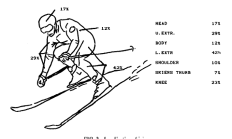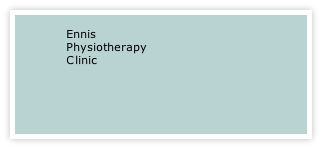Snow sports are increasingly popular. They are fun but are very physically demanding. When injuries do occur they can be significant. Improvements in equipment has improved safety – boots, bindings and helmet use etc.
 Boarders have greatly improved protection through developments in clothing and joint supports, such as wrist and back braces.
Boarders have greatly improved protection through developments in clothing and joint supports, such as wrist and back braces.
Injury rates are relatively low at 2 per 1000 / day – but injuries can be very significant.
Risk of injury is increased with
- Being under 16 years old
- Having less than 5 days experience that season
- First and last day's experience
- Females’ knee injury rate is twice that of males
- Poor general fitness / core stability
Poor Technical ability / Reduced Skill Level
Poor Control / Technique
Speed / Jumping / Use of terrain Parks
- Good weather - increased speeds,
(overcast / poor light reduces speed + risk)
- Lower run difficulty
(Increased piste difficulty = reduced risk of injury with greater experience and skill)
- Helmet use reduced head injury
- Sport – Ski or Boarding
Lower limb injuries common amongst skiers:
Upper limb injuries frequently in boarders.
Studies show a decline in snow sports injury rates by about 55% to its current level.
Lower leg injuries have reduced the most over the years but have recently levelled off.
The incidence of severe knee sprains (ACL primarily) has stabilised over recent decades. Lower leg fractures are less common. Shoulder injury occurs most often due to falls (90%) or to collision (3% with people, 1% with obstacles). Around 1 in 6 of all injuries was to the head.
These improvements are in equipment (bindings and stiffer ski boots), slope grooming and carving skis

Snowboarding has grown rapidly. Snowboarding initially carried a higher risk of injury.
Experience appears to be an important factor; 49% of injured snowboarders were beginners compared to 18% of skiers. Children + adults fall more often than youths do; beginners 6 times as often as experienced boarders. Runs in pipes and terrain parks resulted in falls in 30% and 20% of the runs respectively. Falls were mostly onto the hands for beginners and onto the back/bottom for experienced boarders.
In 2009 the risk of injury from snowboarding was less than that of alpine skiing.
If you have an injury let us assess and treat it at Ennis Physiotherapy Clinic. Simply contact us to make an appointment

The following measures help to reduce the risk of injury:
- Exercise and stretch before skiing/snowboarding
- Arrive fit to ski / ride after suitable pre-holiday conditioning and training
- Take lessons from a certified instructor
- Never ski or snowboard alone off piste
- Wear, maintain and check safety equipment including a helmet; glasses, goggles + sunscreen
- Stay on marked trails or be equipped + fit enough for the off piste
- Follow the skiers/boarders Responsibility Code; keep speed down + be aware of others
- Be alert to physical and environmental hazards; Avoid alcohol and/or drug use on the slopes
- Use properly fitted equipment + bindings
- Ski and ride within your ability and skill level
- Quit before becoming too tired
If you need more personalised advice on pre ski / boarding preparation please contact us at Ennis Physiotherapy Clinic
www.ski-injury.com is a good website with evidence based information
www.skiclub.co.uk has a huge amount of useful information relating to all aspects of snow sports
www.skiclub.ie is the link to the Ski Club of Ireland
The following links provide a nice variety of exercise options on video too. They include some promotional stuff at the start and finish but the exercises themselves are nice and varied.
Click here for a video featuring a stretching programme and click here to see a functional strengthening exercise video.
The following outlines a suitable exercise programme to prepare for skiing and snowboarding. The video illustrates some suitable exercises to begin getting fit for snow sports
|
Injury Region |
Skier |
Snowboarder |
|
Head / Face |
13.50% |
14.30% |
|
Shoulder |
9.50% |
13.10% |
|
Wrist |
|
24.90% |
|
Thumb |
4.40% |
|
|
Back |
|
4.90% |
|
Knee |
33.40% |
11.80% |
|
Lower Leg |
8.60% |
|
|
Ankle |
|
5.90% |
Comparison of Ski and Snowboarding Injuries by Region





Mon - Fri 9.30am - 8.30pm


3A Barrack Close, Barrack St., Ennis, Co. Clare V95 X437

065 6840757
| Health+Safety Services |
| Sports Clubs+Teams Services |
| Standing Posture |
| Sitting Posture |
| Childhood Posture |
| Using Portable Devices |
| Normal Walking |
| Running |
| Running Drills Videos |
| Muscle Energetics |
| General Fitness |
| Losing Body Weight |
| Gaining Body Weight |
| Weight Loss Programmes |
| Start to Run |
| Start to Swim |
| Start Cycling |
| Start Nordic Waliking |
| Rehab of Tensdons |
| Loading of Tendons |
| Non Specific LBP |
| Posture |
| Intervertebral Disc |
| LBP Treatment |
| Non Specific Neck Pain |
| Neck Care Advice |
| Hamstring Strain |
| Ankle Sprain |
| ACL Injury |
| Joint Replacement |
| Shoulder Dislocation |
| Tennis Elbow |
| Wrist fracture |
| Fractured Knuckle |
| Selecting a Racquet |
| Racquet Grip Size |
| Racuet Sport Injuries |
| Training for Racquet Sports |
| Ski + Board Injuries |
| Injury Videos |
| Injury Prevention |
| Preventing Injury in Musicians |
| Irish Dancing |
| Preventing Dance Injury |